AI Conversational Bots: Faster Replies, Better Support

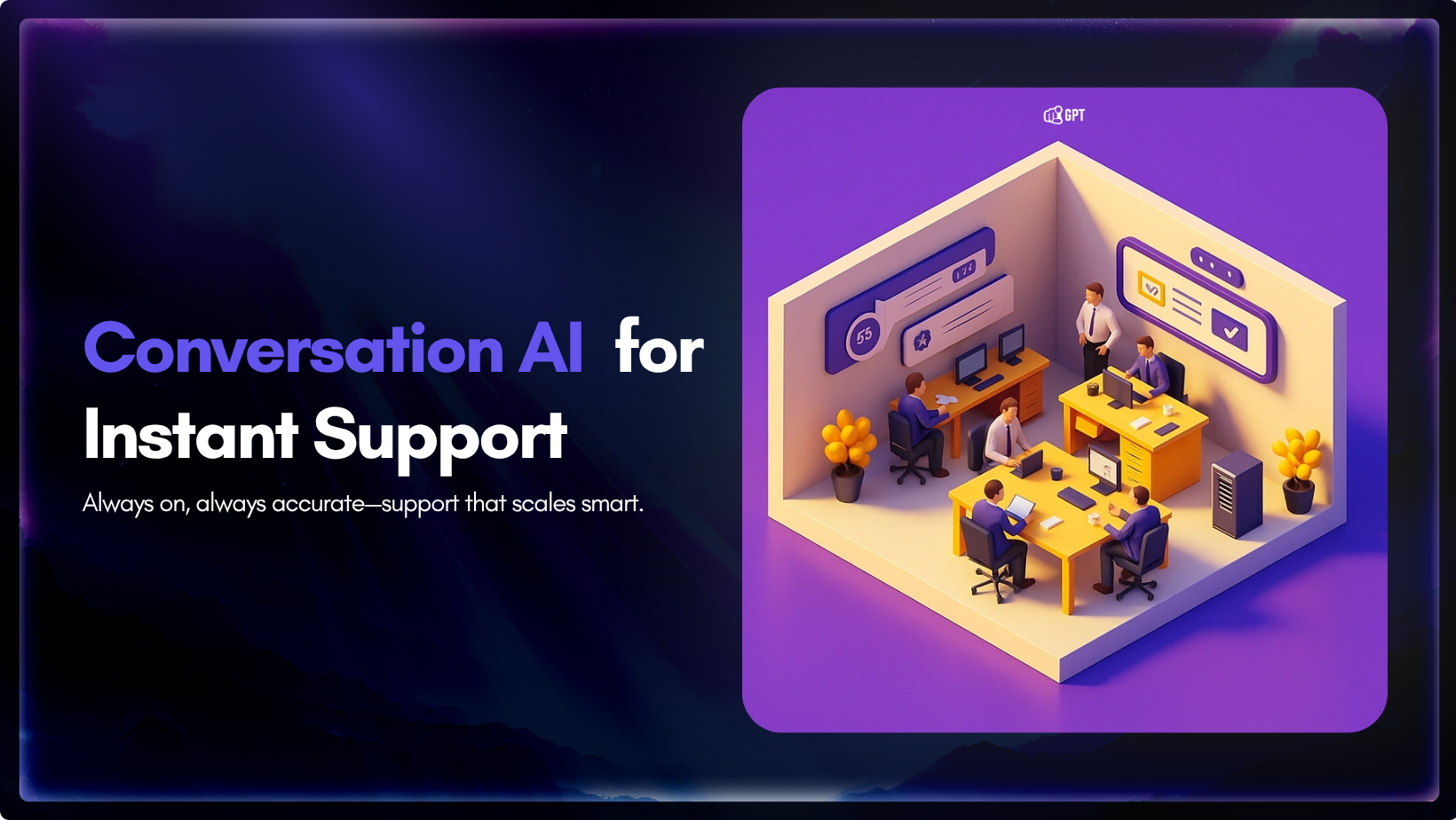
AI Conversation Bots help customer support teams respond faster and provide better experiences.
If you’re managing customer support, you’re probably seeing more requests than ever before. Customers want quick, clear answers without having to repeat themselves or wait a long time.
Tasks such as checking orders, updating accounts, or invoice help do not need your support team’s full attention. AI Conversation Bots handle these basic questions right away, giving your agents more time to deal with issues that need a human touch.
This guide shows you exactly why effective AI Conversation Bots are different, gives examples from businesses already using them successfully, and offers easy-to-follow tips for setting them up in your own customer support system.
An AI conversation bot is software built to chat naturally with users, either through text or voice interactions. Instead of relying on preset scripts, these bots use advanced generative ai technology to understand user messages clearly and respond appropriately.
AI conversation bots have the following important features:
An AI chat bot works similarly to your digital assistant in that it is always available, responds quickly, and communicates in a way that is consistent with your brand’s identity.
If you’ve reached out to customer support recently, you may have encountered quicker and more natural responses.
Many companies have started using AI conversation bots not because they look good, but because these tools effectively address common customer frustrations and lighten the load on support teams.
Here’s how these developments can specifically benefit your support operations:
Customers today expect fast and reliable support. According to Salesforce, 83% of customers anticipate instant replies and consistent communication, whether they’re using WhatsApp, email, or live chat. AI conversation bots provide immediate and accurate responses, helping your customers avoid frustration from repeated interactions.
In recent years, advancements such as OpenAI’s ChatGPT have enabled AI bots to handle conversations more naturally. They can now interpret context, respond clearly, and even detect subtle emotional cues from customers.
Customer support teams frequently handle increasing workloads with limited resources. AI bots take on repetitive tasks like updating orders, resetting passwords, and basic troubleshooting. This allows your team more time and energy for complex customer interactions, reducing stress and boosting job satisfaction.
AI conversation bots deliver reliable responses across all customer communication channels, ensuring consistent quality. This builds trust and helps customers feel confident when reaching out for support.
AI bots capture detailed data from customer interactions. Analysing this data can help identify common issues, customer preferences, and emerging trends. This insight allows your team to proactively improve customer support strategies.
AI conversation bots are a smart way to reduce costs while also creating smoother, more enjoyable customer experiences and helping teams feel more supported and productive.

AI conversation bots help solve real customer problems in a practical way. Here are specific ways they improve the customer experience:
Customers get frustrated repeating problems or using complicated menus. AI bots quickly understand issues from the first message and guide customers directly to solutions. Easier interactions mean happier customers.
AI bots use past conversations and customer history to give relevant, personalized answers. This makes interactions feel meaningful and helpful.
Customers value speed and clarity. AI bots handle common questions right away, like checking order status or scheduling appointments. Resolving issues immediately boosts customer satisfaction.
Customers trust companies more when information is accurate and consistent. AI bots always provide clear answers from the latest company information, preventing confusion and mistakes.
Bots send timely reminders for appointments, renewals, or helpful product information. These thoughtful touches keep customers engaged and ensure they don’t miss important actions.
AI bots notice issues like repeated login attempts or payment failures and proactively reach out to customers. Catching problems early prevents frustration and shows customers their issues matter.
When bots handle routine questions, human support agents can focus more on complicated problems. Customers with difficult or unique issues receive better, more patient help from your support team.
AI conversation bots improve customer experiences by focusing on real issues, providing helpful solutions, and creating smoother interactions for everyone involved.
AI conversation bots have significantly evolved, introducing new capabilities that enhance customer interactions:
Bots now easily handle voice interactions and respond to audio, visuals, or chat. This flexibility lets customers interact naturally through their preferred methods, enhancing convenience.
Modern bots understands emotional cues, adjusting their responses to match customer moods. By identifying frustration or urgency, bots respond empathetically, boosting satisfaction.
AI bots now connect directly to current product data, internal resources, and customer records, ensuring responses are timely and accurate, thus improving customer trust.
Bots can independently complete tasks such as booking appointments, issuing refunds, or updating customer information, minimizing human involvement and speeding up service.
These advancements make AI bots genuinely valuable tools, enhancing customer interactions and improving business efficiency.
YourGPT’s no-code platform simplifies the integration of an AI chatbot into your website or social media platforms. Follow these steps to get started:
Visit YourGPT Chatbot and sign up for a free account. Signing up is your first step towards building a customized AI chatbot tailored to your business needs.
Upload your content from sources such as your website, PDFs, DOCX files, and presentations directly into the YourGPT platform. Our intuitive, no-code dashboard makes AI training straightforward, eliminating the need for technical skills or coding.

Use YourGPT’s no-code builder to personalize your chatbot’s design, tone, and behavior. Define a bot persona aligned with your brand voice, ensuring your chatbot consistently matches customer expectations.

Embed your AI chatbot effortlessly on your website or popular platforms like Wix, Webflow, WordPress, Shopify, and Framer using simple code snippets. Extend your chatbot’s reach by integrating it with messaging platforms like WhatsApp and Messenger, ensuring your support is accessible wherever your customers are.

Activate your chatbot once setup is complete. Your AI chatbot will immediately start interacting with customers, answering queries, assisting website navigation, and enhancing overall user experience.
Continuously monitor performance through YourGPT’s analytics dashboard. Gain insights from user interactions and real-world data to refine and optimize your chatbot’s responses, ensuring it continuously delivers high value.

An effective AI chatbot implementation involves clear planning and ongoing improvements. Follow these best practices to achieve the best results:
Choose specific, high-impact scenarios like handling frequently asked questions, order tracking, or appointment scheduling. Clearly defined use cases ensure faster, measurable outcomes and smoother implementation.
Use actual customer conversations and support interactions to train your AI bot. Authentic interactions help the bot provide more accurate and natural responses, enhancing customer satisfaction.
Establish clear guidelines for situations when the bot can’t fully resolve an issue. Well-defined escalation procedures prevent customer frustration and ensure seamless handovers to human agents.
Track critical metrics such as resolution rates, deflection rates, accuracy, customer satisfaction scores, and response times. Monitoring these indicators from the beginning helps you quickly identify and address areas needing improvement.
Human involvement remains essential. Provide your support team with tools and insights to monitor bot interactions, intervene as needed, and regularly offer feedback. Engaged human oversight ensures continuous bot improvement and superior customer experiences.
AI conversation bots have become essential across various industries due to their practical applications and measurable benefits. Here’s how businesses are effectively using AI bots today:
AI bots are widely used by retail companies to provide real-time customer service. Customers can quickly check the availability of products, get recommendations based on their previous purchases, and get answers to questions about their orders. Additionally, bots proactively recommend related products, which raises average order values.
AI have significantly improved interactions with patients in the medical field. Bots are used to automate appointment scheduling, follow-up reminders, and medication refills. AI bots can quickly answer general health questions and connect patients with doctors for telehealth, allowing medical staff to focus more on those who need urgent or specialized care.
Financial institutions have integrated AI bots to simplify everyday banking tasks. Bots quickly handle customer queries about account balances, recent transactions, or fraud notifications. They also assist customers in basic financial planning by providing timely advice and personalized tips, enhancing overall financial literacy and customer trust.
Travel agencies use bots to make travel experiences seamless. Reservations can be easily booked, changed, or cancelled by customers using bots. Bots actively provide real-time updates on flight statuses, hotel check-ins, and local recommendations while travellers are on the road. At every stage, travellers are guaranteed to feel informed and supported thanks to this proactive communication.
AI bots are used by tech companies to automate customer support and onboarding. Bots effectively assist users with software setup, troubleshoot technical problems, and provide prompt fixes for common issues. Human support teams are able to focus on more complex customer interactions and strategic enhancements as a result of the decreased workload.
These use cases make it clear how conversational ai bots can improve customer experiences and operational efficacy in a variety of industries.
A conversational AI bot is software that understands user intent, keeps context, and replies in natural language across chat, voice, or social channels. It is trained on your knowledge base, policies, and documents. It learns from every new conversation. It hands off smoothly to your staff when a human touch is better. In short, a conversational AI bot turns every message into a helpful exchange powered by AI.
Old bots worked on rigid decision trees. New bots understand phrasing, ask follow-up questions, and support rich actions such as payments, bookings, and updates. They keep context across channels so users never repeat themselves. Continuous learning means answers improve each week.
Not at all. Most platforms use plug-and-play builders with drag-and-drop flows. You connect your data sources, add sample questions, press “publish”, and the bot goes live in minutes.
No. It handles repetitive and after-hours queries so your agents can focus on complex cases. Think of it as an always-on teammate, not a replacement.
Basic FAQ coverage takes less than 10 minutes. Full e-commerce workflows are ready in 1 to 2 hours when order APIs are linked. Complex enterprise setups require 1 to 3 days including sandbox testing. A staged rollout keeps quality high from day one.
It ingests help centre articles in PDF, DOC, or HTML format. It connects to internal wikis and policy documents via secure APIs. It reviews live chat transcripts to learn customer phrasing. Periodic re-indexing keeps knowledge fresh without manual updates.
Yes. One knowledge base powers replies across: website widget, WhatsApp, Messenger, LINE, Telegram, email auto-responses, and voice IVR (if enabled). Centralised analytics provide performance data per channel.
SOC 2 Type 2 audited platform. GDPR-compliant data processing. Field-level encryption during transit and at rest. Role-based access control with single sign-on. Your data is never used to train public AI models.
Track ticket deflection rates (calls/chats avoided). Measure average handle-time reductions. Calculate savings from 24×7 coverage without extra staff. Monitor improvements in Net Promoter Score (NPS). Most clients recover subscription fees within the first quarter.
It immediately routes the chat along with conversation history to the right agent. The agent receives suggested replies so handoff feels natural to the customer.
Yes. Choose preset styles like formal, friendly, or emoji-light. Or set brand-specific guidelines. Changes update instantly across all channels.
AI conversation bots have become integral to modern support infrastructure. Not because they replace human agents, but because they eliminate inconsistency, latency, and the repetitive tasks that undermine both customer experience and operational efficiency.
By 2025, real-time support is no longer aspirational—it is expected. Bots handle the repetitive, low-value interactions continuously, enabling human teams to focus on nuanced, high-impact issues that require judgement, empathy, and expertise.
However, effective implementation goes beyond simple automation. True value emerges when bots are trained on real-world data, embedded into operational workflows, and configured to escalate intelligently when human intervention is required.
Looking ahead, the role of bots will evolve. They will become proactive agents—initiating actions, collaborating with support teams in real time, and maintaining continuity across multiple channels. Organizations that invest strategically now will establish a scalable, resilient foundation for support that is faster, smarter, and more adaptive to customer needs.
YourGPT equips businesses to design conversational AI that aligns with brand identity, adapts with growth, and consistently delivers a superior customer experience. Enhanced support drives customer loyalty, operational efficiency, and long-term profitability.
They don’t replace your team—they remove delays and busywork so customers get answers fast and agents focus on what matters.
No credit card • 7-day free trial
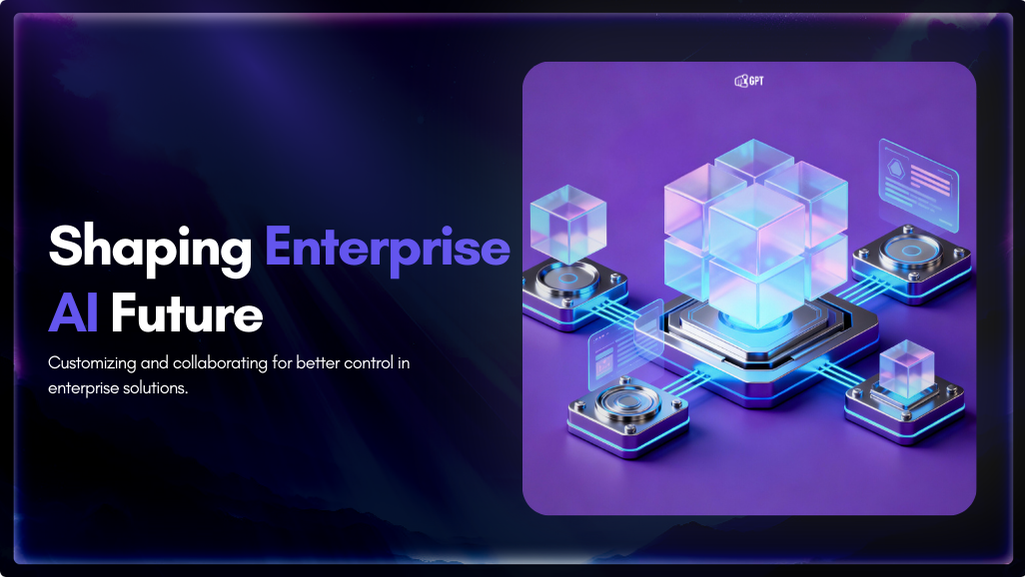
Artificial Intelligence has advanced quickly over the past five years, moving from an experiment to a standard component of modern business. AI has become a central part of enterprise strategy. 88% of organizations are now using AI. This figure has increased from 78% the year before. This transformation is reshaping how companies run, communicate, and […]

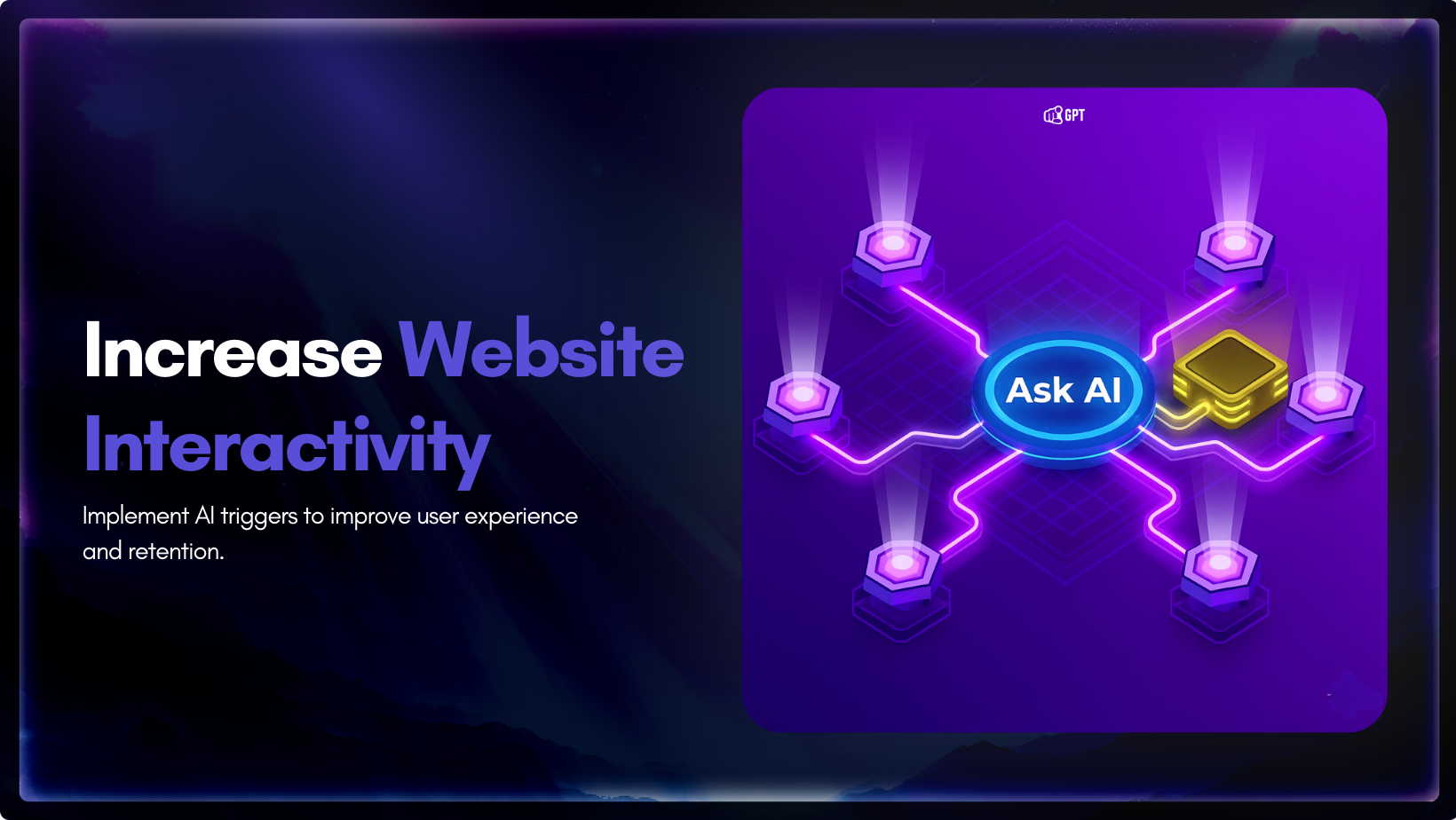
You invest time writing your website copy. You explain features, pricing, and how everything works. The information is there. Still, some visitors leave without clarity, and small gaps in understanding often stop them from moving forward. This happens because a static page cannot adjust to what they want at that moment. They skim a section, […]

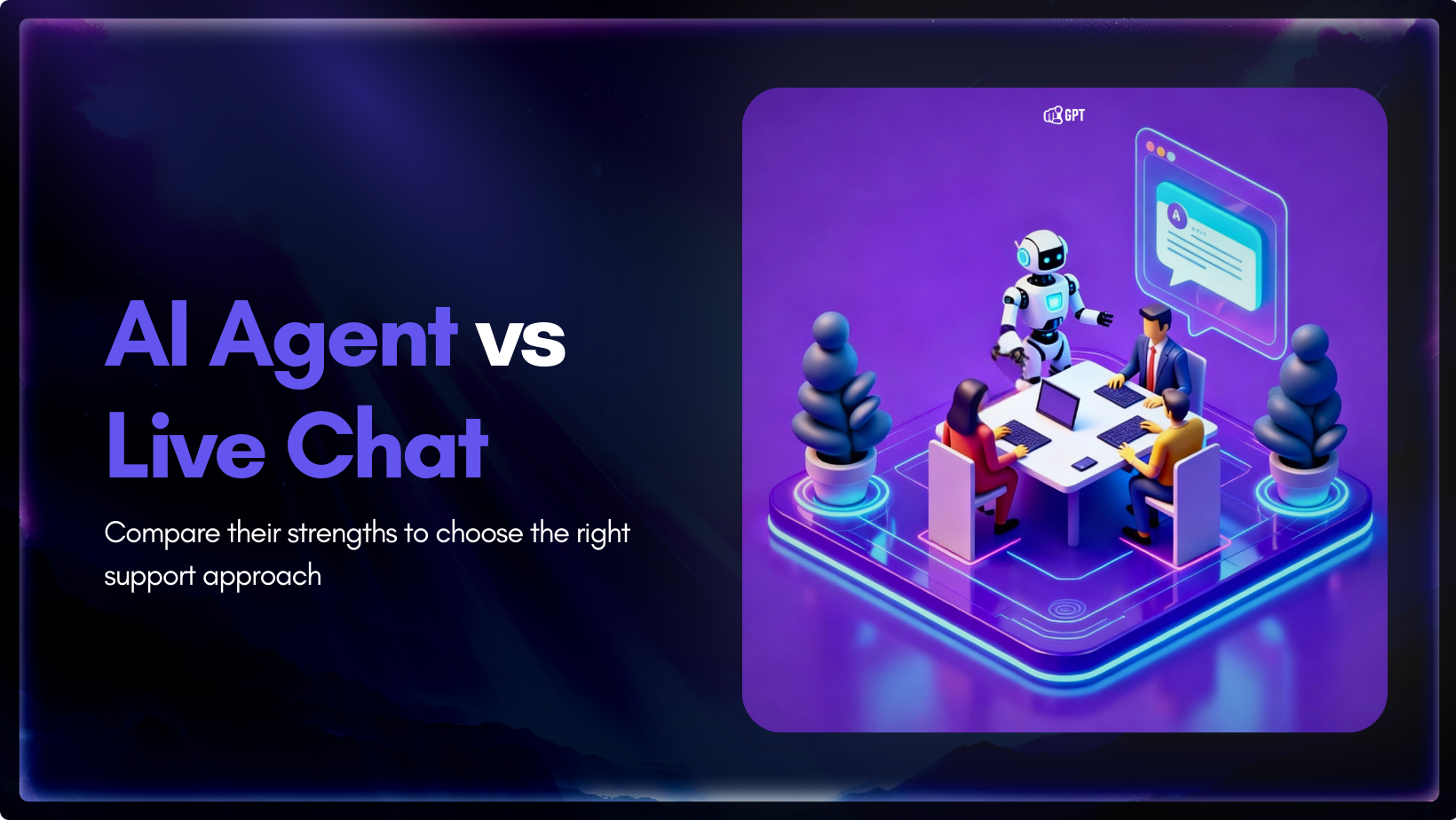
AI agent and live chat each play a different role in customer support, and the choice between them influences how a team handles growth. Companies are moving toward faster support models, and one clear trend is the use of AI to reduce operating costs by up to 30%. The difference shows up when ticket volume […]

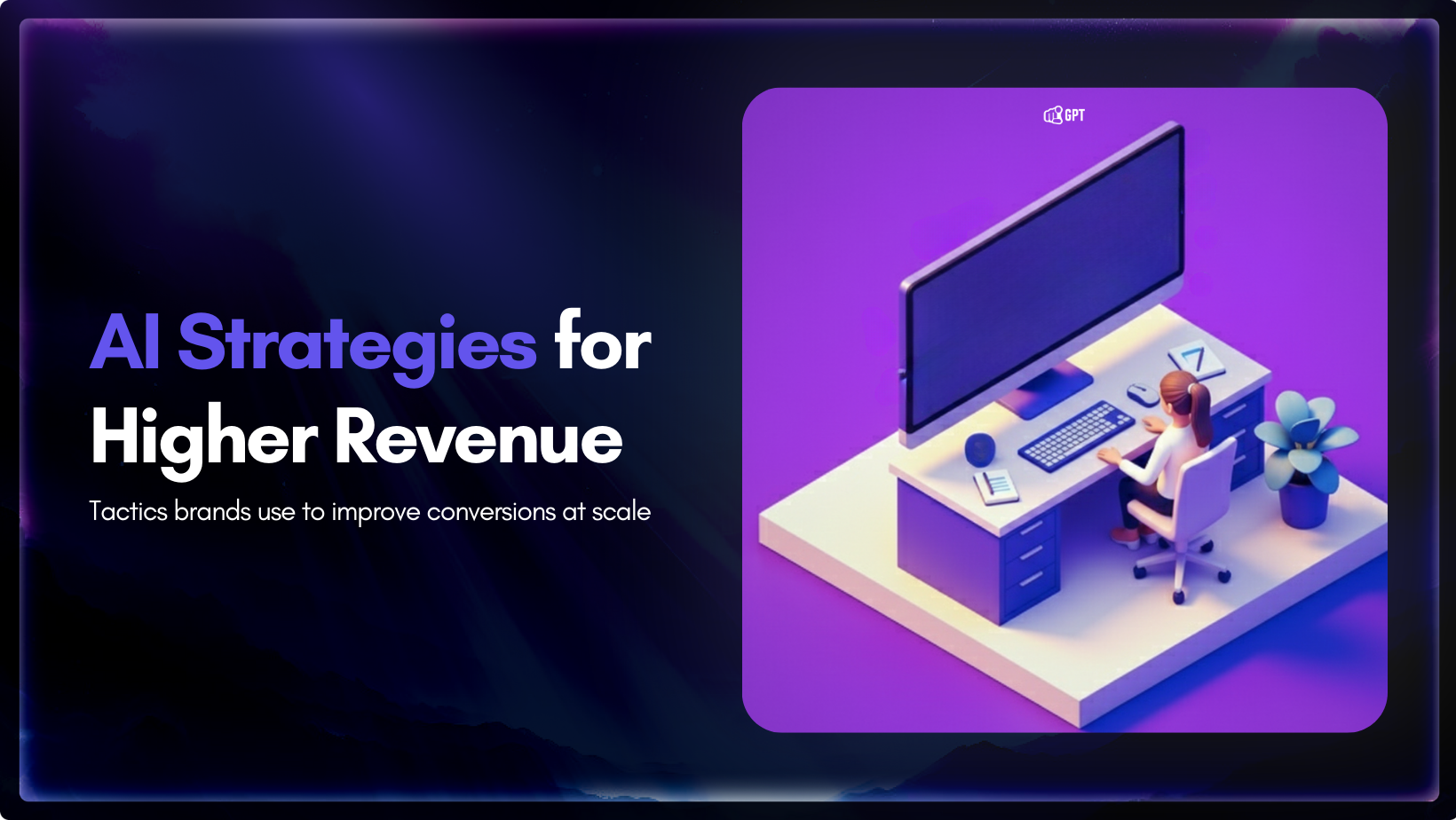
You have definitely heard about the use of AI in marketing. But have you ever seen or learned how it can actually drive revenue? Well, firms using AI in marketing and sales report significant benefits. According to a recent study by McKinsey & Company, revenue increases from AI show up most in marketing and sales, […]

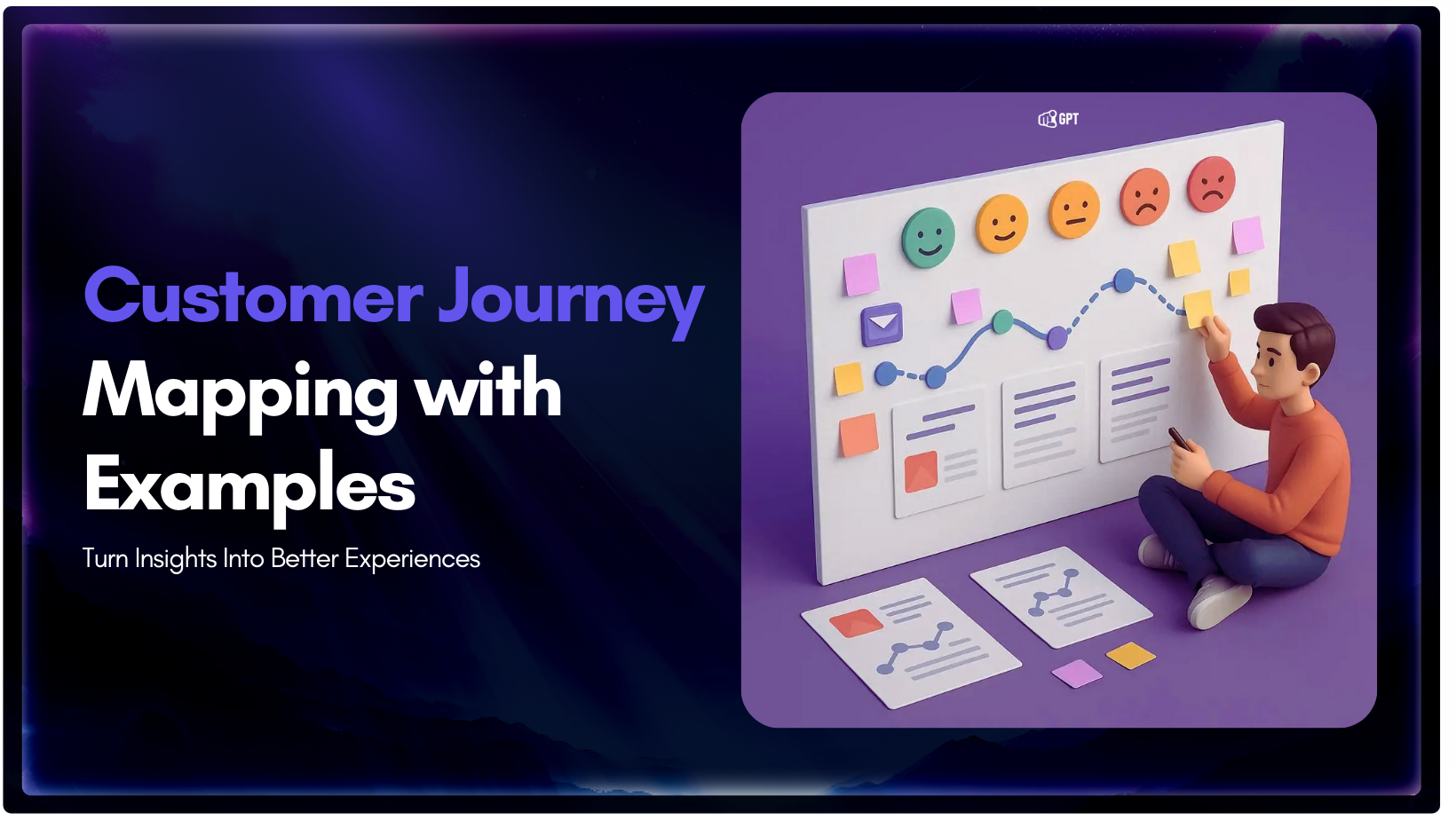
Every business talks about improving customer experience, but many struggle to understand what that experience actually looks like from the customer’s side. This is where a customer journey map becomes essential. It is a practical way to see how people discover your brand, evaluate their options, make a purchase, and decide whether to come back […]

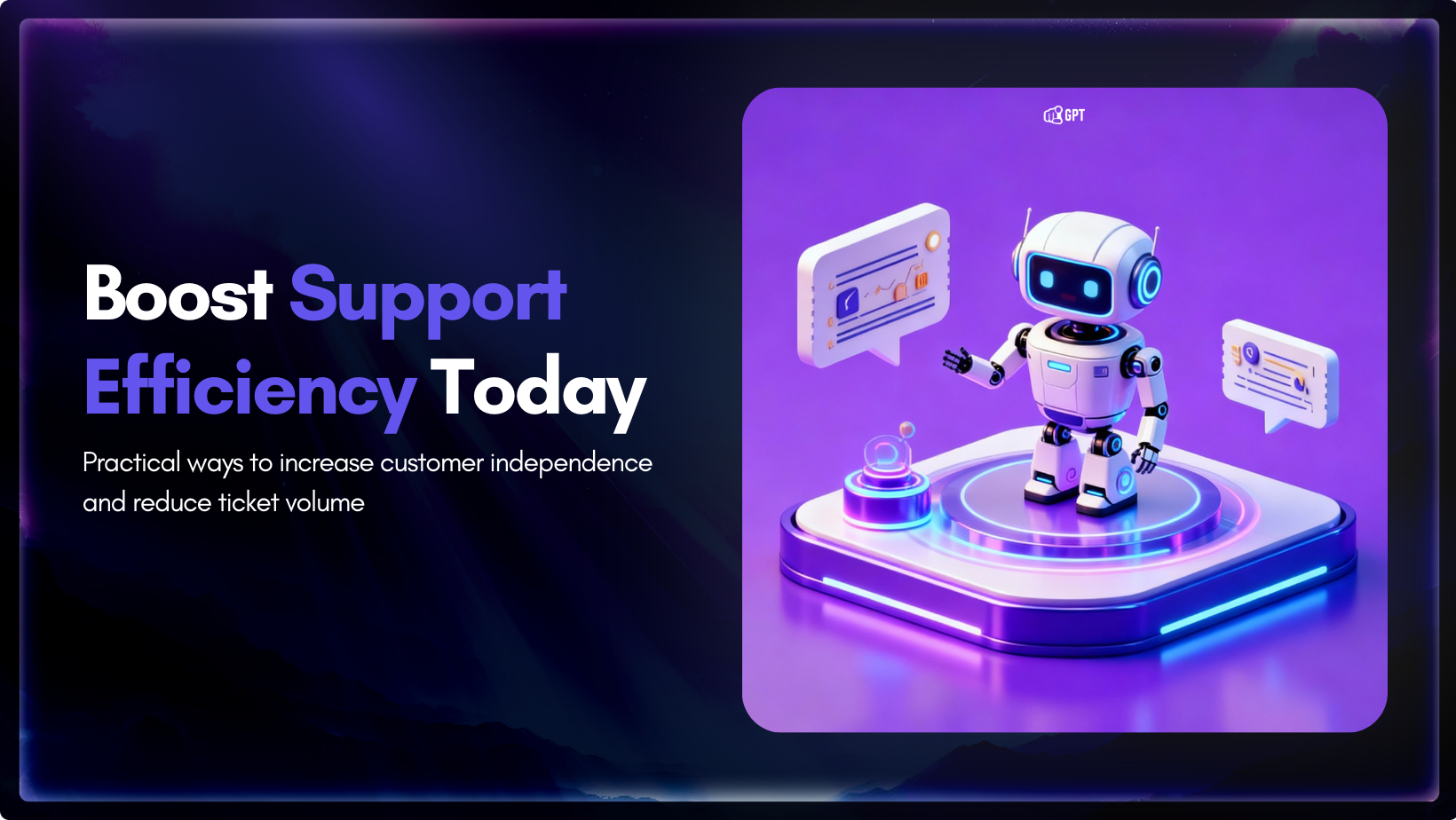
These days, self-service options is the norm for customer support. However, simply having a knowledge base or chatbot is no longer enough. The most important thing is to determine if these tools are effective. Are your customers getting the answers they need? Or are they simply becoming increasingly irate and will eventually contact your support […]
